Foothills Physical Therapy Blog
Monday, April 15, 2024
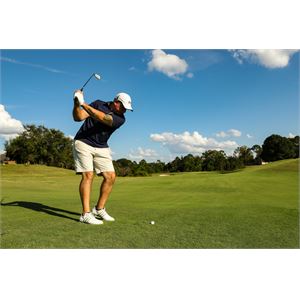 Spring has sprung, and it’s time to get out on the golf course! One major draw to golf is that it is considered a life-long sport. However, it’s a sport that can take a toll on the body. From the repetitive motion of the swing to the various torques placed on joints and muscles, golfers are susceptible to a range of injuries. At Foothills Physical Therapy we have two Physical Therapists (Beau Lockmer and Dave Anderson) with certifications from the Titleist Performance Institute (TPI) who perform golf specific assessments, analyze body and swing mechanics, and provide tailored exercise programs and physical therapy interventions, that play a crucial role in prevention and recovery. Here are the most common sites and injuries in golf:
Elbow Injuries (Medial Epicondylitis and Lateral Epicondylitis): These painful conditions affect the inside, and the outside, of the elbow respectively. They often stem from overuse during the swing. At Foothills PT, we prescribe specific exercises that strengthen the forearm muscles, improve flexibility, and correct swing mechanics. Additionally, certain modalities such as dry needling and soft tissue mobilization, can alleviate pain and promote healing.
Back Pain: The rotational forces of the golf swing can strain muscles and sprain joints in your back, which can then lead to more serious conditions like herniated discs. At Foothills PT we utilize manual therapy techniques to reduce pain and prescribe exercises to improve core and hip stabilization. We also educate golfers on proper body mechanics and warm up routines to improve performance.
Shoulder Injuries: Rotator cuff tears or strains are common in teh amateur golfer due to the repeated overhead motion in the swing. We develop individualized programs to strengthen the rotator cuff and periscapular muscles, improve range of motion, and promote stability during dynamic activities.
Wrist injuries: The wrists endure significant forces during the golf swing making them susceptible to strains, sprains, and even fractures. We focus on restoring wrist mobility, stability, and strength, through targeted exercises and manual therapy techniques. We can also recommend ergonomic modifications to the golfer’s grip or swing to reduce strain on the wrist.
Knee and Ankle injuries: Due to the rotational forces imposed on the knee and ankle during the golf swing, injuries at these joints can occur. We use a variety of interventions to improve strength, stability, and flexibility. We also educate golfers on proper weight distribution, foot positioning, and swing sequencing, to alleviate stress on these joints.
For professional golfers, the most common injuries are typically from overuse. For amateur golfers, injuries are often from improper swing mechanics. Unfortunately, injury incidence increases with chronological age, and it is estimated that more than 50% of golfers will develop some kind of chronic condition. That is why it is essential for golfers to prioritize injury prevention and seek treatment if injuries occur. Now is the time to come in and have one of our TPI certified Physical Therapists assess your injury, perform a TPI movement screen, and provide you with an individualized exercise program to get you playing pain free for years to come.
Posted by isabellesiegrist at 4/15/2024 5:13:00 AM
Wednesday, March 20, 2024
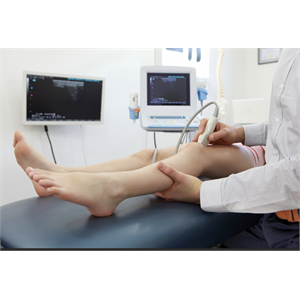 As a dedicated physical therapist within an outpatient orthopedic clinic, my commitment to advancing patient care has led me to explore cutting-edge diagnostic techniques. Among these, Diagnostic Musculoskeletal Ultrasound (MSK US) stands out as a non-invasive imaging technology that is reshaping the landscape of musculoskeletal diagnostics. In this blog post, we will delve into the realm of diagnostic MSK US, highlighting its crucial role as a complementary or alternative method to Magnetic Resonance Imaging (MRI).
Why Choose Diagnostic Musculoskeletal Ultrasound?
The appeal of MSK US lies in its distinct advantages over conventional imaging methods. Compelling reasons why it has become a preferred diagnostic tool:
Accessibility for Every Patient: Unlike certain limitations associated with MRI, MSK US is accessible to virtually every patient, making it an inclusive and versatile diagnostic solution.
High-Resolution Detailing Beyond MRI: MSK US excels in providing high-resolution images that often surpass the level of detail achievable through MRI, allowing for a more intricate visualization of anatomical structures.
Dynamic Real-Time Examination: The real-time dynamic examination capability of MSK US enables therapists to observe movement and assess its impact on musculoskeletal structures.
Precision in Probe Placement: The ultrasound probe's precise placement at the site of pain or discomfort enables targeted and localized imaging, a valuable feature for pinpointing specific issues.
Effective Imaging in the Presence of Surgical Hardware: Even in cases with surgical hardware, MSK US remains effective as ultrasound waves easily penetrate metallic implants, offering clear postoperative imaging.
Insightful Doppler Sonography: Doppler sonography, a feature of MSK US, provides vital physiological information, contributing to the assessment of blood flow and vascular dynamics within the musculoskeletal system.
Accurate Fluid-Solid Differentiation: MSK US excels in differentiating between fluid and solid material, enhancing the accuracy of assessments for conditions such as cysts, edema, or hematomas.
Guidance for Therapeutic Interventions: With real-time imaging capabilities, MSK US serves as an excellent guide for therapeutic interventions, ensuring precise needle placements during procedures like dry needling.
Bilateral Comparison Facilitation: MSK US facilitates bilateral comparison, enabling the evaluation of asymmetry or discrepancies between the left and right sides of the body.
Adaptable Field of View: Featuring a more flexible field of view compared to other imaging modalities, MSK US adapts seamlessly to various anatomical regions, ensuring comprehensive assessments.
Indications for Diagnostic Musculoskeletal Ultrasound:
Moving beyond its technical prowess, MSK US proves invaluable in assessing a diverse range of musculoskeletal conditions, including but not limited to:
- Pain or dysfunction
- Soft tissue or bone injuries
- Tendon or ligament pathology
- Arthritis, synovitis, or crystal deposition diseases
- Intra-articular bodies
- Joint effusion
- Nerve entrapment, injury, neuropathy, masses, or subluxation
- Evaluation of soft tissue masses, swelling, or fluid collections
- Detection of foreign bodies in the superficial soft tissues
- Planning and guiding invasive procedures
- Congenital or developmental anomalies
- Postoperative or postprocedural evaluations
- Joint laxity, stiffness, or decreased range of motion
- Malalignment
- Sensory deficits or paresthesias
- Motor weakness
Many of our physical therapists are being trained in this up and coming technique. Stay tuned for when you can get scheduled with one of them!
Posted by isabellesiegrist at 3/20/2024 6:55:00 AM
Wednesday, March 6, 2024
![]() 7 ways physical therapy can significantly enhance sports performance:
Injury Prevention: Physical therapists assess athletes for weaknesses, imbalances, and movement dysfunctions that could predispose them to injuries. By addressing these issues through targeted exercises, stretching, and corrective techniques, physical therapists help athletes maintain optimal biomechanics and reduce the risk of injury.
Enhanced Movement Efficiency: Through specific exercises and techniques, physical therapists can improve an athlete's flexibility, mobility, and joint stability. This enhances movement efficiency, allowing athletes to perform sports-specific movements with greater precision and effectiveness.
Strength and Conditioning: Physical therapists design personalized strength and conditioning programs tailored to an athlete's sport, position, and individual needs. These programs aim to increase muscular strength, power, endurance, and overall physical fitness, which are essential for optimal sports performance.
Rehabilitation: In the event of an injury, physical therapists play a crucial role in the rehabilitation process. They use evidence-based techniques to promote tissue healing, restore range of motion, rebuild strength, and improve functional abilities. By guiding athletes through a structured rehabilitation program, physical therapists help them return to sport safely and efficiently.
Biomechanical Analysis: Physical therapists analyze an athlete's movement patterns to identify inefficiencies or abnormalities that may hinder performance. By addressing these issues through corrective exercises, manual therapy, and movement re-education, physical therapists can optimize biomechanics and enhance sports performance.
Pain Management: Pain can significantly impact an athlete's performance and overall well-being. Physical therapists employ various modalities, such as manual therapy, therapeutic exercise, and modalities like heat or ice therapy, to alleviate pain and improve function. By managing pain effectively, physical therapists enable athletes to perform at their best without being hindered by discomfort.
Education and Injury Prevention Strategies: Physical therapists educate athletes about proper body mechanics, injury prevention strategies, and self-care techniques. By empowering athletes with knowledge and tools to take care of their bodies, physical therapists help them make informed decisions to prevent injuries and optimize performance.
Overall, physical therapy serves as an integral component of sports performance enhancement by addressing physical limitations, optimizing movement mechanics, preventing injuries, and facilitating rehabilitation when injuries occur. If you are looking to optimize your sports performance or recover from a sports injury, Foothills Physical Therapy is ready to help. Give us a call to schedule an appointment.
Posted by isabellesiegrist at 3/6/2024 6:27:00 AM
Monday, February 19, 2024
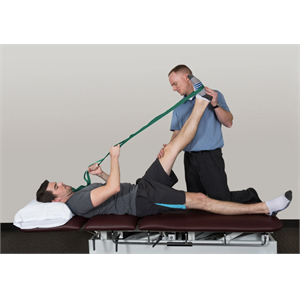 In a world where sedentary lifestyles and desk-bound jobs have become the norm, physical therapy emerges as a beacon of hope for individuals seeking to reclaim their health and well-being. Beyond the traditional perception of physical therapy as a rehabilitation tool for injuries, its benefits extend far beyond the physical realm, encompassing mental and emotional well-being as well. In today's blog post we are going to dive into the multifaceted advantages that physical therapy offers, transforming lives in more ways than one.
PHYSICAL BENEFITS
Pain Relief and Improved Mobility: Physical therapy is renowned for its efficacy in alleviating pain and enhancing mobility. Through targeted exercises, stretching routines, and manual techniques, our physical therapists address musculoskeletal issues, restoring functionality and reducing pain associated with conditions like arthritis, back pain, and joint problems.
Injury Prevention and Rehabilitation: Whether you're an athlete aiming for peak performance or an individual recovering from surgery, physical therapy plays a pivotal role in preventing injuries and aiding rehabilitation. Our therapists tailor programs to enhance strength, flexibility, and coordination, facilitating a smoother recovery process.
Enhanced Posture and Alignment: Sedentary lifestyles often lead to poor posture and musculoskeletal imbalances. Our physical therapists employ corrective exercises and ergonomic guidance to improve posture, align the body, and mitigate the risk of chronic conditions arising from prolonged poor alignment.
MENTAL BENEFITS
Stress Reduction: Physical activity has long been associated with stress relief, and physical therapy is no exception. Engaging in targeted exercises releases endorphins, the body's natural stress relievers, promoting a sense of well-being and relaxation.
Cognitive Function Improvement: Physical activity has been linked to improved cognitive function and a reduced risk of cognitive decline. Physical therapy programs that include aerobic exercise may contribute to enhanced brain health, benefiting memory, attention, and overall cognitive abilities.
Boosted Confidence and Self-Esteem: Achieving physical milestones and overcoming challenges in physical therapy can significantly boost confidence and self-esteem. As individuals witness their progress, they develop a positive mindset and a greater sense of control over their bodies, fostering a healthier self-image.
EMOTIONAL BENEFITS
Empowerment Through Self-Care: Physical therapy empowers individuals to take an active role in their health and well-being. Learning about their bodies, understanding exercises, and participating in their own recovery process instills a sense of control, leading to increased emotional resilience.
Improved Sleep Quality: Regular physical activity, a cornerstone of physical therapy, is associated with improved sleep quality. Better sleep contributes to emotional stability, mood regulation, and an overall enhanced quality of life.
Physical therapy transcends its conventional role as a rehabilitation tool, offering a holistic approach to health that addresses the interconnectedness of physical, mental, and emotional well-being. By embracing the multifaceted benefits of physical therapy, individuals can embark on a journey towards lasting health and vitality, unlocking their full potential in the pursuit of a balanced and fulfilling life.
Posted by isabellesiegrist at 2/19/2024 6:54:00 AM
Monday, February 5, 2024
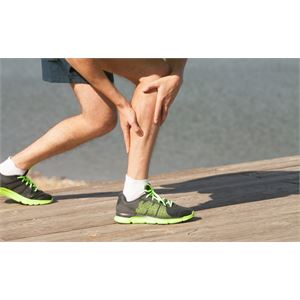 Tight muscles are something that plagues almost everyone. No matter what our normal activities include, there are usually some groups of muscles that become strong and tight and a corresponding set that gets overstretched and weak. An example is the typical recreational runner: tight hamstrings. But what if it’s not just tight hamstrings?
Just like we have blood vessels that travel throughout our entire body, we also have nerves that do so. Studies have shown, in cadavers, that if you tug on the nerves in the toes, the brainstem moves. THAT is how connected our nerves are. Just like any other tissue in our bodies, nerves can only tolerate so much stretch, so they can very easily limit our “flexibility.” Why do nerves get tight in the first place? It can be a lot of reasons: spinal issues, scar tissue, swelling, recent trauma, and more.
So how do we know if it’s nerve or muscle that limiting our motion? A common presentation in nerve tightness is: no matter how much you stretch the “muscle” it just doesn’t seem to get any looser. We see this regularly with people that have been stretching their hamstrings their whole lift and still can barely see their toes. Another possible presentation is that when you go to stretch, you may develop numbness or tingling in that area.
Addressing muscle tightness is pretty easy with simply stretching the affected muscle and strengthening the opposite direction. Fixing nerve tightness is a little more complicated, because it requires being able to figure out what the cause of the nerve tightness is in the first place. For example, if there is any scarring from an old surgery that is limiting nerve movement, the scar tissue would have to be addressed. If there is some hypermobility in the spine causing neural tension, core stabilization will have to be utilized. Proper diagnosis is essential to get the nerves moving better.
For any help with addressing tightness of any cause, schedule an appointment with one of our physical therapists!
Posted by isabellesiegrist at 2/5/2024 6:01:00 AM
Monday, January 22, 2024
 In our fast-paced, modern world, many of us find ourselves glued to our chairs for extended periods, whether at work or at home. Little do we realize that this seemingly harmless habit of prolonged sitting can have severe consequences on our health. In fact, health experts are now comparing it to the dangers associated with smoking. In this blog post, we'll explore the detrimental effects of sitting all day and provide practical tips on how to incorporate movement into our daily lives.
The Hazards of Sedentary Living:
-
Muscle Atrophy and Weakness: Prolonged sitting can lead to muscle atrophy and weakness, particularly in the muscles of the lower back, hips, and legs. This can result in decreased flexibility and an increased risk of injuries.
-
-
Poor Posture: Sitting for extended periods often contributes to poor posture, leading to issues like rounded shoulders, a forward head position, and an increased curvature of the spine. Over time, this can cause chronic pain and discomfort.
-
-
Weight Gain and Obesity: Lack of movement contributes to a sedentary lifestyle, which is a significant risk factor for weight gain and obesity. Sitting for hours on end slows down metabolism and negatively impacts the body's ability to burn calories.
-
-
Cardiovascular Issues: Studies have shown that prolonged sitting is associated with an increased risk of cardiovascular diseases. Lack of movement can lead to poor blood circulation, elevated blood pressure, and higher levels of bad cholesterol.
-
-
Mental Health Implications: Sedentary behavior is not only detrimental to physical health but also has adverse effects on mental well-being. It has been linked to an increased risk of anxiety, depression, and stress.
-
Incorporating Movement Into Your Day:
-
Desk Exercises: Take short breaks throughout the day to stretch and perform simple desk exercises. These can include neck stretches, shoulder rolls, and seated leg lifts.
-
-
Stand-Up Meetings: Encourage stand-up or walking meetings to break the monotony of sitting. This not only promotes movement but also enhances creativity and productivity.
-
-
Use a Sit-Stand Desk: Invest in a sit-stand desk that allows you to switch between sitting and standing positions. This can significantly reduce the negative impact of prolonged sitting.
-
-
Take the Stairs: Opt for stairs instead of elevators whenever possible. Climbing stairs is an excellent way to engage multiple muscle groups and get the heart pumping.
-
-
Regular Walks: Schedule short walks during breaks or lunchtime. Aim for at least 30 minutes of moderate-intensity walking each day to promote overall health.
It's time to recognize the dangers of prolonged sitting and take proactive steps to break free from the sedentary lifestyle. By incorporating simple movement strategies into our daily routines, we can improve our physical and mental well-being, reduce the risk of chronic diseases, and reclaim control over our health. Remember, the key is not to stay still for too long – because sitting is the new smoking for our health.
Posted by isabellesiegrist at 1/22/2024 9:51:00 PM
Monday, January 8, 2024
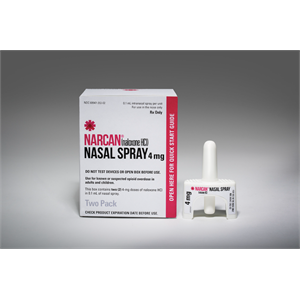 Foothills Physical Therapy not only provides direct support to its community through patient care but we are also equipped with CPR training for healthcare professionals and we actively engage in community service, such as our recent participation in Rake Up Boise. Through this blog post, my aim is to educate you on constructive ways you can contribute to their community - like how to administer Narcan.
Opioid overdoses are a critical public health concern, and being prepared to respond with prompt and effective intervention can save lives. One crucial tool in this effort is Narcan (naloxone), a medication that can rapidly reverse the effects of opioid overdose. In this guide, we'll explore how to attain Narcan and administer it in the event of an overdose.
1: Understanding Opioid Overdose
Begin by recognizing the signs of an opioid overdose. Common symptoms include slowed or stopped breathing, unresponsiveness, and pinpoint pupils. Immediate action is crucial, as opioid overdoses can be fatal.
2: Obtaining Narcan
Narcan is available in various forms, including nasal spray and injectable options. To obtain Narcan, follow these steps:
Prescription: In many places, Narcan is available without a prescription. You can obtain it at pharmacies or through community-based programs. Check your local regulations to determine the specific requirements.
I walked up to the pharmacy at Albertsons and asked after seeing signs that said you didn’t need a prescription. That turned out to be true. They gave me two single use nasal sprays that have the potential to reverse respiratory arrest due to opioid overdose. I got the generic and it was $21 for 2 doses and brand name Narcan was $75 for 4 doses. I will carry these with me with my CPR mask from now on
3: Administering Narcan
When responding to a suspected opioid overdose, remember the following steps for administering Narcan:
Call for Help: Dial emergency services immediately. Time is of the essence, and professional medical assistance is crucial.
Position the Person: Lay the person on their back and ensure their airway is clear. Tilt their head back slightly to open the airway.
Administer Narcan: Follow the instructions on the Narcan packaging. For nasal spray, insert the nozzle into the nostril closest to you and press the plunger firmly. If using an injectable form, administer it into the muscle, such as the thigh.
If there is a suspected opioid overdose you are protected under the Good Samaritan Law. If it is not an overdose Narcan will not harm or help the patient.
Wait and Repeat: Stay with the person and be prepared to administer additional doses if needed administer into the opposite nostril. Narcan's effects are temporary, and it may wear off before the opioids in the system. Emergency medical professionals will need to take over care once they arrive.
4: Post-Administration Care
After administering Narcan, continue to monitor the person for any changes in their condition. It is essential to seek professional medical attention, even if the individual appears to recover fully. Provide information about the overdose to emergency responders.
Being equipped with Narcan and knowing how to administer it can make a significant impact in reversing opioid overdoses. Education and awareness are crucial components of combating the opioid crisis. By understanding the signs of overdose, obtaining Narcan, and acting swiftly, individuals can play a pivotal role in saving lives and supporting those affected by opioid use.
Posted by isabellesiegrist at 1/8/2024 6:46:00 AM
Tuesday, December 26, 2023
 We have all experienced it. An old picture of your younger self or a “Facebook Memory” resurfaces from several years ago, and when you see it you think to yourself, “Wow, I used to be in such great shape! I miss how good I felt during that part of my life!” Fitness not only improves your physical health, but your mental health as well, improving your happiness, self-esteem, and overall confidence. After seeing this photo, you may feel a surge of motivation and tell yourself, “That is it, next week I’m getting after it! I’m going to get healthier because I want that feeling and that confidence back.”
Maintaining that newfound motivation is paramount to achieve these goals, and sadly that is where most people fall short. By some estimates, 80% of people fail their New Year’s resolutions by February, and approximately 92% fail to stick to their resolutions for the entire year. So here are 3 easy tips to help you maintain that motivation and follow through on achieving your health and fitness goals:
#1: Share your goals with someone you respect.
Your goals should be for your own self-betterment, and not for any one else. That being said, it is human nature to seek the approval of our peers. That is where this tip can be helpful. Whether it be your spouse, coach, training partner, doctor, or physical therapist, share your goals with someone. But not just anyone, share your goals with SOMEONE YOU RESPECT. When you do this, it fuels your motivation, because you don’t want the person you confided in to ask you about your goals just for you to admit to them that you are not following through. Follow through on your goals, and you will have good news to share with them when they ask how things are going.
#2: Everyone is busy. Prioritize your health.
If your check engine light comes on your vehicle, you take it in to get repaired without hesitation, right? Because you understand that you need your car to get around, and if it breaks down, it disrupts so much of your day-to-day life. Well, your body is your vehicle for everyday life, and often times we don’t think about it in those terms. Like your vehicle, if your body breaks down, it adversely affects your day-to-day life, which then prevents you from being able to do the hobbies and activities that bring you joy and happiness. This point is very black and white, prioritize your health.
#3: Consistency is key! Establish a routine.
Consistency is key when it comes to following through on your health and fitness goals. Whether you are doing home workouts or working out at your local gym, the longer you remain consistent with your exercise and wellness routine, the better you will feel. When you feel better, it fuels your motivation and helps you build towards accomplishing your goals. The time and effort you put into your training is undeniable. Maybe your normal workout routine includes 1-hour sessions at the gym, but life throws you’re a curveball and you know you won’t have 60 minutes to dedicate to your workout that day – 30 minutes is better than nothing, and it helps you remain steadfast towards your accomplishing your goals. If you are too sore from the workout you did a few days ago or maybe you are rehabbing an injury; again, don’t let it derail you – make it to the gym, but just work on stretching that day.
Posted by isabellesiegrist at 12/26/2023 6:24:00 AM
Monday, December 11, 2023
 Winter is a season that many eagerly anticipate for its outdoor recreational activities, particularly winter sports like skiing and ice skating. However, with the thrill of these sports comes the risk of injuries. The cold and slippery conditions can be treacherous if you're not adequately prepared. In this blog post, we'll offer guidance on how to prevent common winter sports injuries, ensuring you can enjoy the chill without the spill.
Understanding Common Winter Sports Injuries
Before we dive into prevention strategies, it's important to be aware of the most common injuries associated with winter sports:
1. Sprains and Strains: These injuries often occur in the wrists, knees, and ankles due to falls or sudden twists on the ice or slopes.
2. Fractures and Dislocations: The high-speed nature of winter sports can result in bone fractures and joint dislocations, especially in the wrists, arms, and shoulders.
3. Head Injuries: Traumatic brain injuries, such as concussions, can happen during high-impact sports like skiing or snowboarding.
4. Back and Spinal Injuries: Falls and collisions can lead to back and spinal cord injuries, which can be extremely serious.
Preventing Common Winter Sports Injuries
1. Proper Equipment: Invest in well-fitting, high-quality gear, such as helmets, pads, and clothing designed for your specific sport. Make sure your equipment is in good condition and replace it when necessary.
2. Warm-Up: Always begin your winter sports activities with a proper warm-up routine. Stretch and prepare your muscles and joints for the activity to reduce the risk of sprains and strains.
3. Strengthen Core Muscles: A strong core provides stability and balance, which is crucial for winter sports. Incorporate core-strengthening exercises into your fitness routine.
4. Learn Proper Technique: Take lessons from experienced instructors to learn proper skiing and ice skating techniques. Correct form can significantly reduce your risk of injury.
5. Stay Hydrated: Dehydration can lead to muscle fatigue and reduced concentration. Drink plenty of water, even in the cold.
6. Know Your Limits: Don't push yourself too hard or attempt advanced slopes or tricks without proper training and experience.
7. Observe Weather Conditions: Pay attention to weather forecasts, and be cautious in icy or foggy conditions. Poor visibility can lead to accidents.
8. Stay on Designated Trails: Stick to marked trails and slopes to minimize the risk of hidden obstacles or dangerous terrain.
9. Take Breaks: Fatigue increases the risk of accidents. Take regular breaks to rest and recharge.
10. Use the Buddy System: When participating in winter sports, go with a friend or let someone know your whereabouts. In case of an emergency, having someone aware of your location can be lifesaving.
Seeking Professional Help
If you do experience a winter sports-related injury, it's essential to seek professional help promptly. Physical therapists are trained to assist in the rehabilitation and recovery process, helping you get back on your feet and back to enjoying the winter sports you love.
Winter sports are a fantastic way to embrace the season, but they come with their share of injury risks. By following these injury prevention tips and staying cautious on the slopes and ice rinks, you can minimize the chances of mishaps. Remember, safety is paramount for a fun and injury-free winter sports season.
Stay active, stay safe, and enjoy the winter wonderland!
Posted by isabellesiegrist at 12/11/2023 6:36:00 AM
Monday, November 20, 2023
 The holiday season is often a time of joy, celebration, and togetherness. However, it can also be one of the most stressful times of the year. The pressure to meet expectations, the flurry of activities, and the disruptions to your routine can all contribute to elevated stress levels. For many, this stress can manifest physically, leading to aches and pains. As physical therapists, we understand the connection between your mental and physical well-being. In this blog post, we'll explore effective stress-reducing strategies to help you stay physically and mentally healthy during the holiday season.
1. Prioritize Self-Care
One of the best ways to manage stress is to prioritize self-care. During this hectic season, don't neglect your well-being. Set aside time for relaxation and activities you enjoy. Whether it's reading a book, taking a warm bath, or practicing mindfulness, self-care can help you recharge and manage stress effectively.
2. Stay Active
Maintaining an exercise routine can be challenging during the holidays, but physical activity is a powerful stress reducer. Exercise triggers the release of endorphins, your body's natural mood lifters. Even a short daily walk or a quick home workout can make a significant difference in your stress levels.
3. Set Realistic Expectations
The pressure to create the "perfect" holiday experience can be overwhelming. Instead, focus on setting realistic expectations for yourself. Embrace imperfections, ask for help, and remember that it's okay not to do everything on your own.
4. Time Management
Effective time management is key to reducing stress. Create a holiday schedule or to-do list, and prioritize tasks based on importance. Allocate time for rest and relaxation, and avoid overloading your schedule.
5. Practice Mindfulness and Relaxation Techniques
Mindfulness meditation, deep breathing, and progressive muscle relaxation are effective techniques to manage stress. These practices can help you stay grounded and centered when the holiday chaos surrounds you.
6. Healthy Eating Habits
The holiday season often involves indulgent meals and treats, but it's essential to maintain a balanced diet. Overeating and consuming too much sugar can lead to energy crashes and increased stress. Enjoy holiday treats in moderation and prioritize nutritious foods that fuel your body.
7. Stay Connected
The holidays are a time for socializing and spending time with loved ones. Make time for meaningful connections and conversations. Sharing your thoughts and feelings with friends and family can be therapeutic and help alleviate stress.
8. Seek Professional Help
If you find that holiday stress is taking a toll on your physical and mental well-being, don't hesitate to seek professional help. A physical therapist can provide guidance and exercises to relieve stress-related muscle tension and discomfort.
9. Maintain Sleep Hygiene
A good night's sleep is essential for managing stress. Maintain a consistent sleep schedule and create a comfortable sleep environment. Avoid caffeine and screen time before bed to promote restful sleep.
10. Embrace Gratitude
Lastly, practice gratitude. Focusing on the positive aspects of the holiday season can reduce stress. Keep a gratitude journal, reflecting on the things for which you are thankful.
The holiday season should be a time of joy and connection, not stress and discomfort. By incorporating these stress-reducing strategies into your holiday routine, you can manage stress effectively, promote your overall well-being, and ensure a healthy, happy holiday season. Remember, our physical therapy office is here to support you in maintaining a healthy mind and body, especially during the times when you need it most. Happy holidays!
Posted by isabellesiegrist at 11/20/2023 6:54:00 AM
|